Special Section
Life Skills
Colleges and universities serve up more than core curriculum as they help students meet the demands of today’s workforce.
By Courtney Ott — February 2024
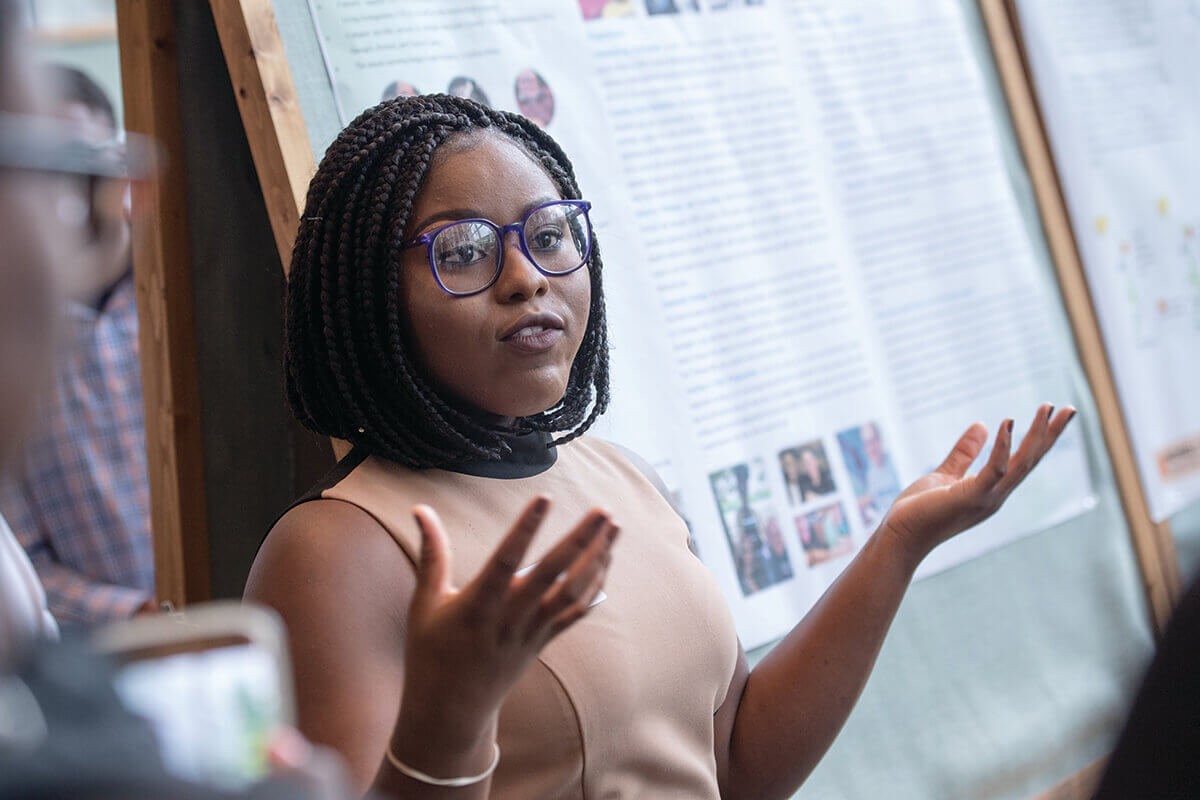
High school graduates are continually asked the same question: Where are you going to college? Choosing a college is one of the most challenging parts of entering higher education. At which school do students want to spend the next four years? And how do they decide?
While this question for many young adults can be very difficult, there are some factors that play into where a student should decide to attend. These factors include distance from home, financial costs, what major a student wants to pursue, and the institutions’ ability to get students career-ready after graduation. Job-readiness in particular has become a more important part of a student’s college selection.
Finding a job after graduation is a timely and competitive process. According to a study done by the University of Washington, “It takes the average college graduate three to six months to secure employment after graduation.”
Coppin State, a public, historically Black university (HBCU) in Baltimore, has multiple tools and programs in place to ensure students graduate career-ready.
“We connect our students with mentors . . . those are both peer and professional mentors,” says Coppin State President Anthony Jenkins. “In addition, we require our students by their sophomore year to start entering the internship phase of their college career.”
Jenkins emphasizes the importance of having an internship while attending a four-year college because of the opportunities it could bring after graduation. At Coppin State, faculty and mentors want to help students succeed in the internship search and gain valuable experience, so there are offices on campus that students can use as a resource.
“Through our career and professional development office, as well as specialty internship offices that we have, such as our college of business, our college of science and education, we have individuals in those areas that also help our students identify internships,” says Jenkins. “That is an expectation, and we push at the university experiential learning so that those opportunities occur for our students that prepare them for the career that they’re going to enter.”
In the classroom, Jenkins says that professors are focused on teaching students where the industry is heading rather than outdated information to prepare students for the workforce.
“That’s why we have several advisory councils that consist of industry leaders that sit on our nursing board, on our college of business advisory board, and on our teacher education board, because we want to teach to where industry is and where it’s headed,” he says. “Many institutions that don’t have that type of partnership with industry are teaching outdated information . . . and so we are very in-tune with making sure that we align our curriculum and our teaching with the practices of where industry is and where industry is headed and building solid partnerships and relationships with private companies and federal agencies.”
Stevenson University, a private, four-year institution in Owings Mills, also pushes internships for students. So much so that each Stevenson student is required to have an internship to graduate in four years. “A great thing about Stevenson is that each of the different schools has an internship coordinator or director. So, it’s someone that students can work with directly for those instances,” said Matthew Seiler, director of the Career Connection Center. “Another thing that we’re trying for a lot of internships is to make sure it’s an actual internship experience. It shouldn’t just be a volunteer opportunity; it should be something that’s going to help them in their career down the road.”
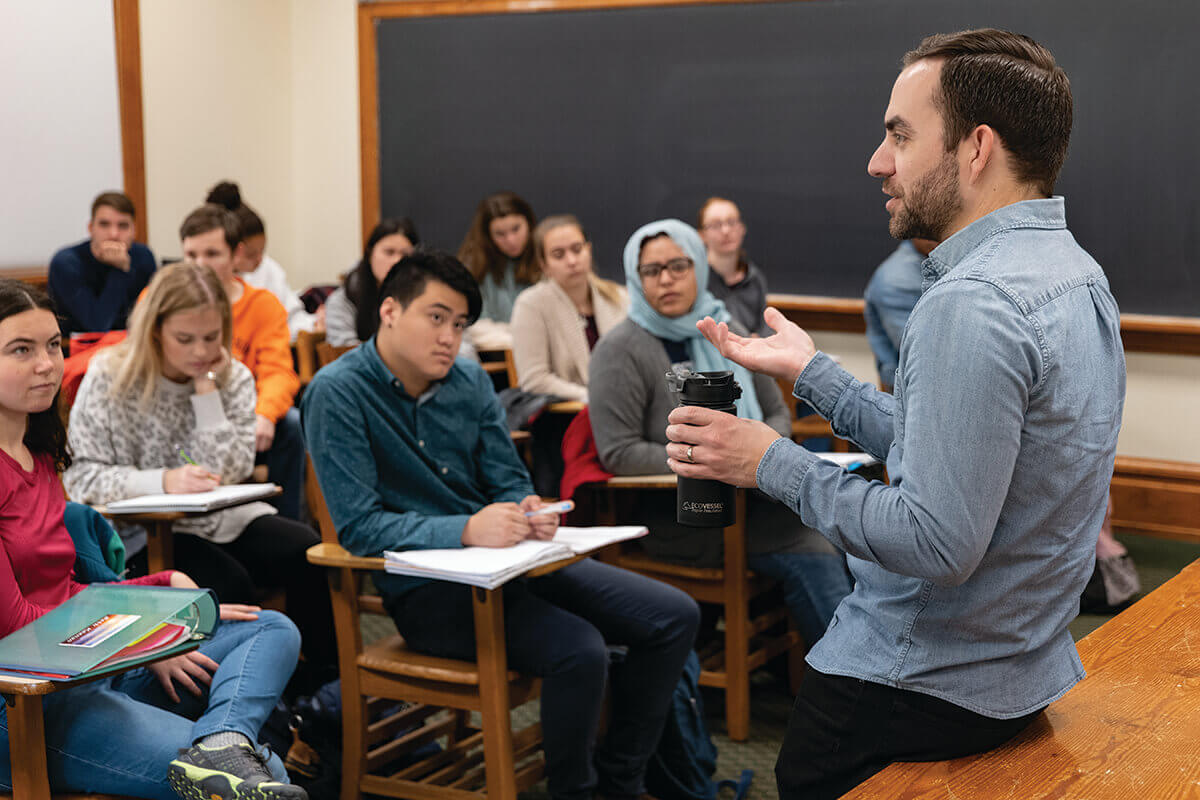
To assist its students with finding an internship and then mentoring them through it, Stevenson has the Mustang Career Mentor Program.
“That [Mustang Career Mentor Program] allows students to connect with not only Stevenson alumni, but also some community partners. We have a lot of employers that get on campus, and get in front of students as well, that are in the program. And it provides them opportunities to network and gain some quick career advice,” said Seiler. “Those sorts of interactions have led to internships and jobs down the road, so there’s a lot of opportunity for that.”
Stevenson also offers other programs and initiatives to assist students in the career-readiness field. These resources include a professional minor program, an executive residence program, and small class sizes to help build relationships between students and professors.
Loyola University Maryland is also preparing their students for career-readiness after graduation. Professors and curriculums focus on certain topics that will help students grow in different skills.
“For those who are going to graduate, we offer a lot of reflective activities, whether it’s through campus ministry, through our leadership programming, that allows students to discern what their path would be,” says Michael Puma, dean of undergraduate studies. “So not just getting a job, but filling purpose in that position. I think our core, that is really focused on writing and ethics and philosophy and history, provides those critical-thinking skills that allow a student to hone their skills.”
For first-year students at Loyola, the Messina program is integrated into students’ schedules for two semesters to help students transition into the college scene. While working on the transition, Messina also connects students with their advisors and helps create a bond for future mentorship.
“They [advisors] get to see your work, they get to see how you perform and communicate with each other. So just the kind of guidance students are getting early on at Loyola is a little bit more qualitative, in that they get a lot more feedback about who they are,” says Puma. “That translates into then picking a major and then moving beyond that into other opportunities, whether that be internships, or research, or connecting with our Career Center.”
No matter where a student ends up, colleges and universities today are helping students become career-ready after graduation to ensure employment and success.
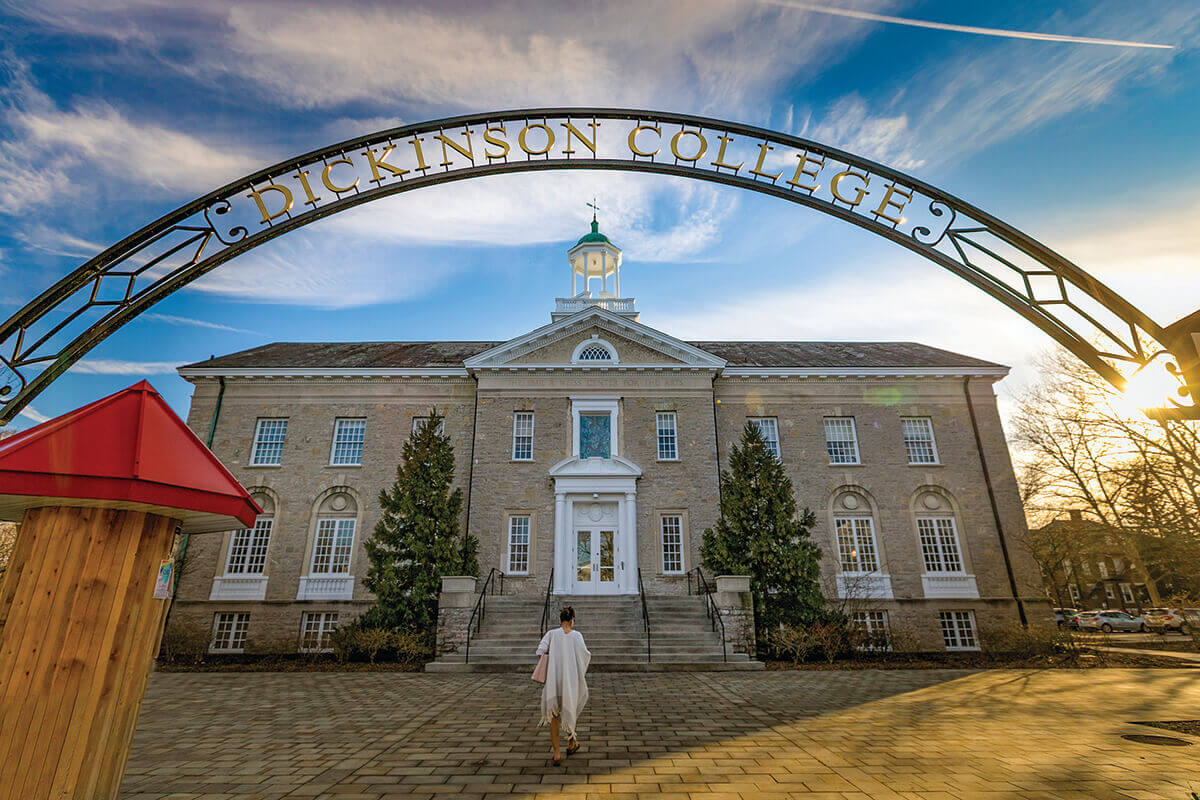
Annual College Guide
If you’re looking for more information on the college search, look no further. Here’s our guide to regional schools that includes everything you need to know to start making informed decisions.
Bowie State University in Prince George’s County began with a mission to provide educational opportunities for Black citizens and, more than a century after opening, has consistently ranked among the best HBCUs in the country, offering undergraduate and graduate degrees, as well as specialty certificates and doctoral programs. It also has a solid reputation for being one of the best values around.
SIZE OF STUDENT BODY: 5,378
STUDENT TO FACULTY RATIO: 17:1
ANNUAL TUITION: $8,998 in-state, $19,838 out-of-state*
ACCEPTANCE RATE: 87 percent
POPULAR AREAS OF STUDY: Business Administration, Criminal Justice, Radio and Television Broadcasting Technology/Technician, Psychology, Biology, Computer/information Technology, Child Development, Nursing, and Sociology
A historically Black institution founded in 1900, Coppin State University is situated in the heart of Baltimore City in the Mondawmin neighborhood. Part of the University System of Maryland in Baltimore, the school offers 57 undergraduate, graduate, and certificate degrees. It’s been rated in the Top 50 Best HBCUs in the Nation (College Consensus), the Top 5 Best Value Online Schools in Maryland (Online School Center), and No. 7 Best Colleges in Maryland by Salary Score (GradReports).
In 2022, CSU received two large-scale federal education grants, including a $3.7-million Teacher Quality Partnership grant from the U.S. Department of Education to increase teacher diversity, while boosting student success in high-needs urban and rural schools across Maryland. CSU also recently created the Freddie Gray Student Success Scholarship, which is available to graduates of Carver Vocational-Technical High School, where Gray was a student.
Coppin takes esports (competitive video gaming) seriously. In the fall of 2021, Coppin became the first HBCU to open a building on campus exclusively devoted to esports. The Premier Esports Lab opened in September, with a guest appearance from Grammy-nominated artist Cordae.
SIZE OF STUDENT BODY: 1,757 undergraduates, 249 graduates
STUDENT TO FACULTY RATIO: 10:1
ANNUAL TUITION: $6,904 in-state, $13,560 out-of-state
ACCEPTANCE RATE: 45 percent
POPULAR AREAS OF STUDY: Nursing, Business, Biology, Social Sciences, Criminal Justice, Social Work
Founded in 1783, Dickinson College is a liberal arts college in Carlisle, Pennsylvania, with a suburban campus that spans 144 acres. The school offers 41 undergraduate degrees within 17 fields of study.
It’s been rated as one of the best schools in the country for its sustainability efforts, which include an 80-acre, USDA-certified organic farm. Princeton Review rated it No. 2 in the Top 50 Green Colleges, and it was rated No. 1 in Overall Top Performers among baccalaureate institutions in the Association for the Advancement of Sustainability in Higher Education’s “Sustainable Campus Index” in 2022.
SIZE OF STUDENT BODY: 2,137
STUDENT TO FACULTY RATIO: 9:1
ANNUAL TUITION: $62,900
ACCEPTANCE RATE: 43 percent
POPULAR AREAS OF STUDY: International Business, General Economics, General Sociology, International Relations & Affairs, General Psychology, Econometrics and Quantitative Economics
For those who want to escape to the Appalachian Mountains while still benefitting from the low cost of in-state tuition, Frostburg State University in Western Maryland offers more than 100 bachelor’s, master’s, and doctoral
degree programs, as well as miles of wilderness areas nearby to explore. On that note, its online M.S. in Recreation & Parks Management is ranked the No. 2 most-affordable program in the U.S. by GetEducated.com.
SIZE OF STUDENT BODY: 3,264
STUDENT TO FACULTY RATIO: 13:1
ANNUAL TUITION: $9,998 in-state, $25,180 out-of-state
ACCEPTANCE RATE: 88 percent
POPULAR AREAS OF STUDY: Economics, Nursing, Business Administration and Management
Gettysburg College, a private, liberal arts school founded in 1832, sits on 225 acres adjacent to the Gettysburg Battlefield in Pennsylvania. Many of the buildings on campus are historically significant, so it’s no wonder that it draws students interested in studying history.
The school offers 40 academic majors, 40 minors, more than 120 campus clubs and organizations, and 800 events on campus each year, plus more than 100 study-abroad opportunities open to students.
Its Majestic Theater serves as a venue for the greater Gettysburg community, hosting national acts and performances by the school’s Sunderman Conservatory of Music students. It’s ranked No. 16 for “students who study the most” by the Princeton Review, which also ranked Gettysburg College’s dining hall No. 15 in the country for best campus food.
SIZE OF STUDENT BODY: 2,324
STUDENT TO FACULTY RATIO: 10:1
ANNUAL TUITION: $64,230
ACCEPTANCE RATE: 56 percent
POPULAR AREAS OF STUDY: Political Science, Economics, Business Administration and Management, Exercise Physiology, Biological Sciences, Psychology, History
A private, liberal arts college spanning 287 wooded acres in Towson, Goucher College takes pride in its close-knit community and leadership in global education. One hundred percent of Goucher students study abroad, and the college offers more than 60 flexible programs around the world for students to develop international experience.
Goucher has continually ranked among U.S. News & World Report’s best and most innovative national liberal arts colleges. Goucher ranked in the top four percent of all public and private colleges nationwide for its impact on social mobility, according to Georgetown University’s Center on Education and the Workforce.
In the last few years, Goucher began exciting partnerships with other schools, such as Johns Hopkins University, Loyola University, Middlebury College, and more to come, to provide a pathway for students to continue their education beyond Goucher. For instance, their 4+1 MBA Program allows students to earn an advanced business degree through Loyola via a “Fast Track” admission process, and at a 15-percent discount on tuition.
Also of note: Goucher’s unique First-Year Village, which opened between 2016 and 2018, offers a unique space for 450 first-year students to live, work, and socialize. It features a sound-proof study room and communal spaces for students to cook, learn, and interact on each floor.
SIZE OF STUDENT BODY: 1,728
STUDENT TO FACULTY RATIO: 9:1
ANNUAL TUITION: $51,250
ACCEPTANCE RATE: 81 percent
POPULAR AREAS OF STUDY: Psychology, Communication and Media Studies, Education, Rhetoric and Composition, Business Administration
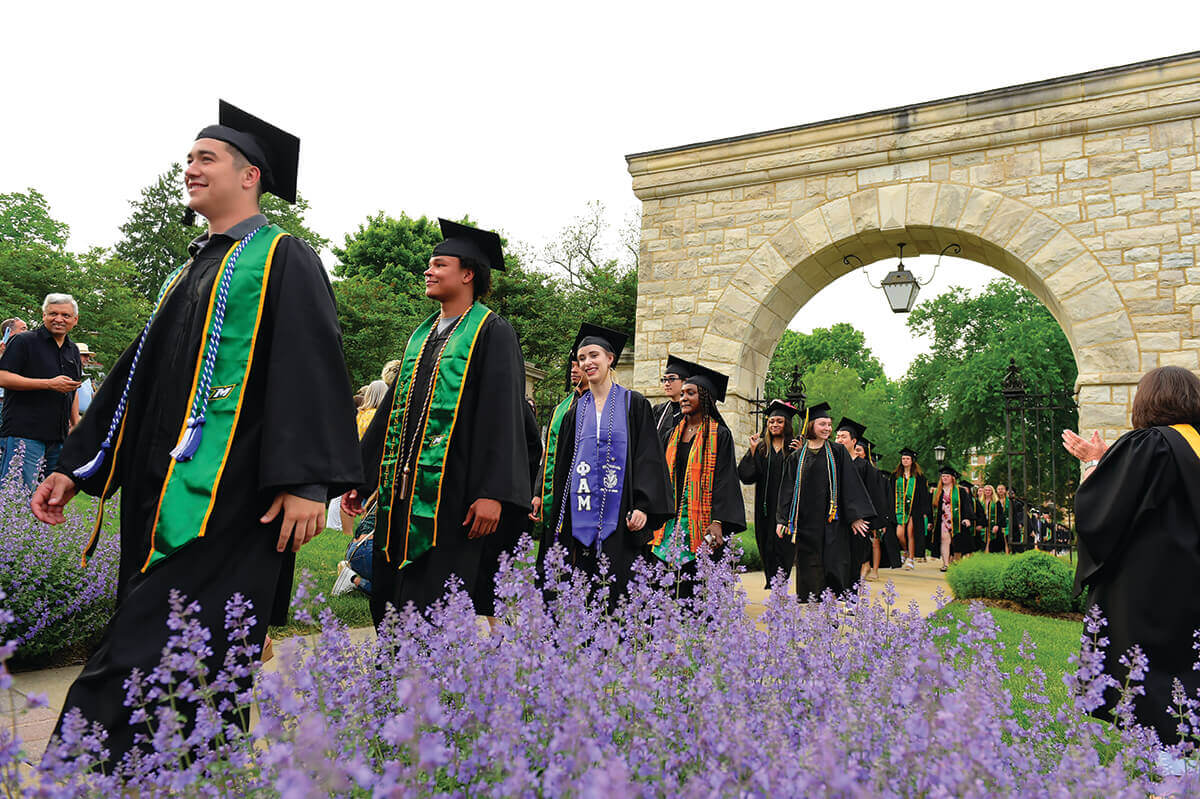
Johns Hopkins University (JHU) offers nine academic divisions and hundreds of courses of study, with campuses spread throughout Baltimore, including the Peabody Institute, a music and dance conservatory in Mount Vernon. Its main Homewood campus is located on North Charles Street.
The prestigious, world-renowned university has a strong reputation for its public health and medical studies and has been compared to Ivy League schools.
One point of pride is its financial aid program, which covers 100 percent of calculated need for every admitted student, without loans. This means JHU works with families to calculate what they can afford to contribute toward the total cost of attendance—including meals, books, travel, and other expenses—and JHU covers the rest with grants that don’t need to be repaid.
Last year, JHU added two new minors: Latin American Studies and Writing Seminars.
It also announced new efforts to move toward a broader, more flexible undergraduate educational experience that will include a required first-year seminar and the streamlining of major requirements to allow for greater intellectual exploration.
SIZE OF STUDENT BODY: 5,253
STUDENT TO FACULTY RATIO: 6:1
ANNUAL TUITION: $62,380 for Peabody Institute, $62,840 for the School of Engineering and the School of Arts and Sciences
ACCEPTANCE RATE: 10.9 percent
POPULAR AREAS OF STUDY: Computer Science, Molecular and Cellular Biology, Neuroscience, Economics, Public Health Studies, International Studies
This private, Jesuit institution offers undergraduate and graduate programs on a beautiful urban campus situated across 81 acres in northern Baltimore City. Education at Loyola is based in the Jesuit tradition of scholarship and cura personalis, or care for the whole person.
Loyola is known for its academic rigor, while helping students lead purposeful lives. Seventy percent of students study abroad, and the school currently ranks fourth in “Best Regional Universities in the North,” according to U.S. News & World Report.
SIZE OF STUDENT BODY: 3,977
STUDENT TO FACULTY RATIO: 13:1
ANNUAL TUITION: $55,480
ACCEPTANCE RATE: 83 percent
POPULAR AREAS OF STUDY: Business, Management, Marketing, Journalism, Social Sciences, Biological and Biomedical Sciences, Psychology, English Language and Literature, Engineering and Social Sciences
MARYLAND INSTITUTE COLLEGE OF ART (MICA)
Located in the heart of Baltimore, MICA is the oldest continuously degree-granting college of art and design in the nation. According to U.S. News & World Report, it ranks among one of the top schools for it fine arts, graphic design, painting, drawing, and sculpture programs.
MICA also offers graduate level degree programs including Master of Fine Art, Master of Business Administration Art, and Master of Professional Studies. According to its website, MICA offers, “education and experience that will prepare you to be a creative leader in the 21st century.”
SIZE OF STUDENT BODY: 1,694
STUDENT TO FACULTY RATIO: 8:1
ANNUAL TUITION: $53,180 undergraduate
ACCEPTANCE RATE: 85 percent
POPULAR AREAS OF STUDY: Graphic Design, Illustration, Multimedia, Painting, Fine Arts
Founded in 1867, McDaniel College sits in a bucolic setting near Westminster in Carroll County. The private, four-year liberal arts college offers more than 70 undergraduate programs of study and more than 20 graduate programs. A recent addition to McDaniel’s curriculum is a National Security Fellows Program that provides students with knowledge, skills, and experience in national security, along with the ability to specialize in an area of interest, such as interstate conflict, intrastate political violence, cybersecurity, ethics, and human rights.
The school also recently launched a new STEM Center to serve as a physical hub to support students studying the sciences. Equipped with adaptive workspaces and collaborative technology, the STEM Center hosts workshops focused on both the professional world and course-specific content, along with tutoring services and a study environment for students.
McDaniel earned a spot as the top-ranked Maryland institution on U.S. News & World Report’s “Best Value Schools” list among regional universities in the North for academic quality and affordability. The college also ranked as one of the “Best Regional Universities in the North” in their “Best Colleges” rankings for 2022-2023.
SIZE OF STUDENT BODY: 1,800
STUDENT TO FACULTY RATIO: 13:1
ANNUAL TUITION: $48,672
ACCEPTANCE RATE: 82 percent
POPULAR AREAS OF STUDY: Kinesiology, Business Administration, Psychology, Sociology, Political Science, Social Work
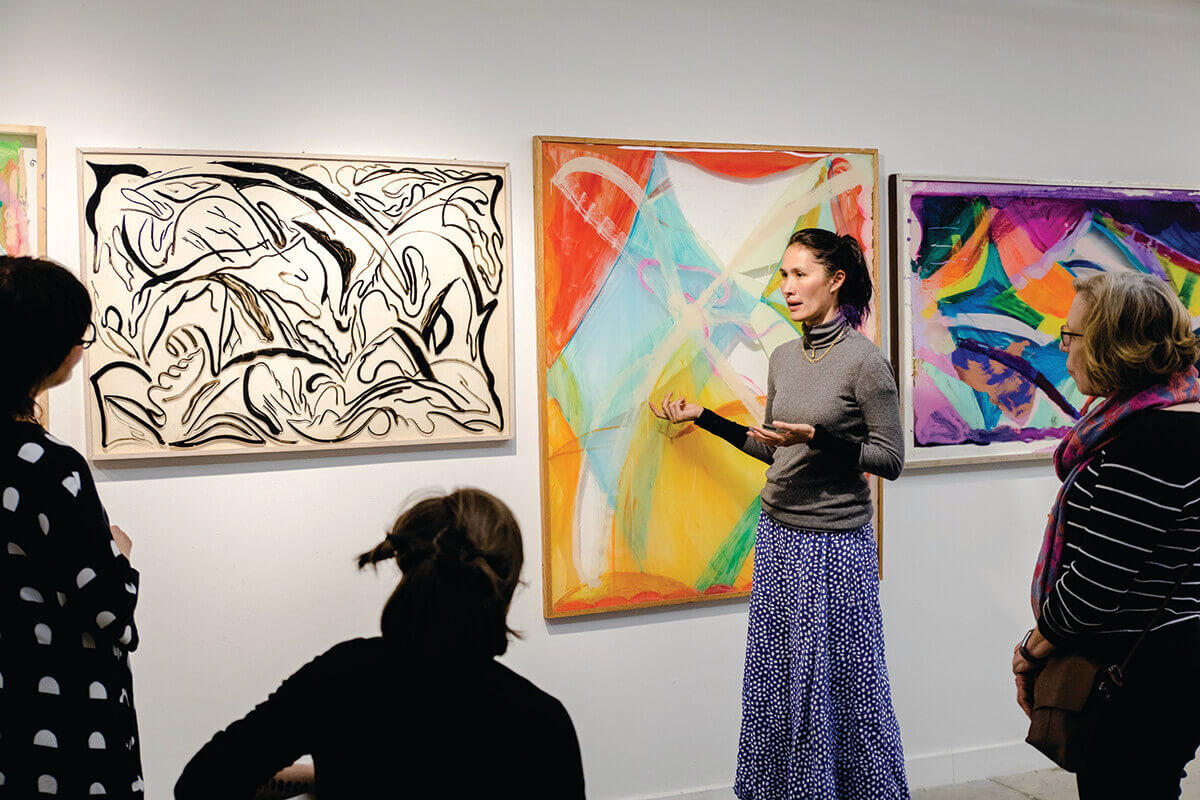
The largest of Maryland’s HBCUs, Morgan is a public institution founded in 1867. It is situated in northeast Baltimore. As a Carnegie-classified high-research (R2) institution, Morgan provides instruction to a multiethnic, multiracial, multinational student body and offers more than 140 academic programs at undergraduate and graduate levels. Recently, Morgan launched the state’s first bachelor of science degree in cloud computing. As Maryland’s Preeminent Public Urban Research University, Morgan fulfills its mission to address the needs and challenges of the modern urban environment through intense community level study and pioneering solutions.
SIZE OF STUDENT BODY: 7,609
STUDENT TO FACULTY RATIO: 17:1
ANNUAL TUITION: $8,008 for in-state and $18,480 for out-of-state
ACCEPTANCE RATE: 85 percent
POPULAR AREAS OF STUDY: Civil Engineering, Communications Engineering, Business Administration and Management, Social Work, Biology/Biological Sciences, Architecture, Finance, Psychology, Sociology
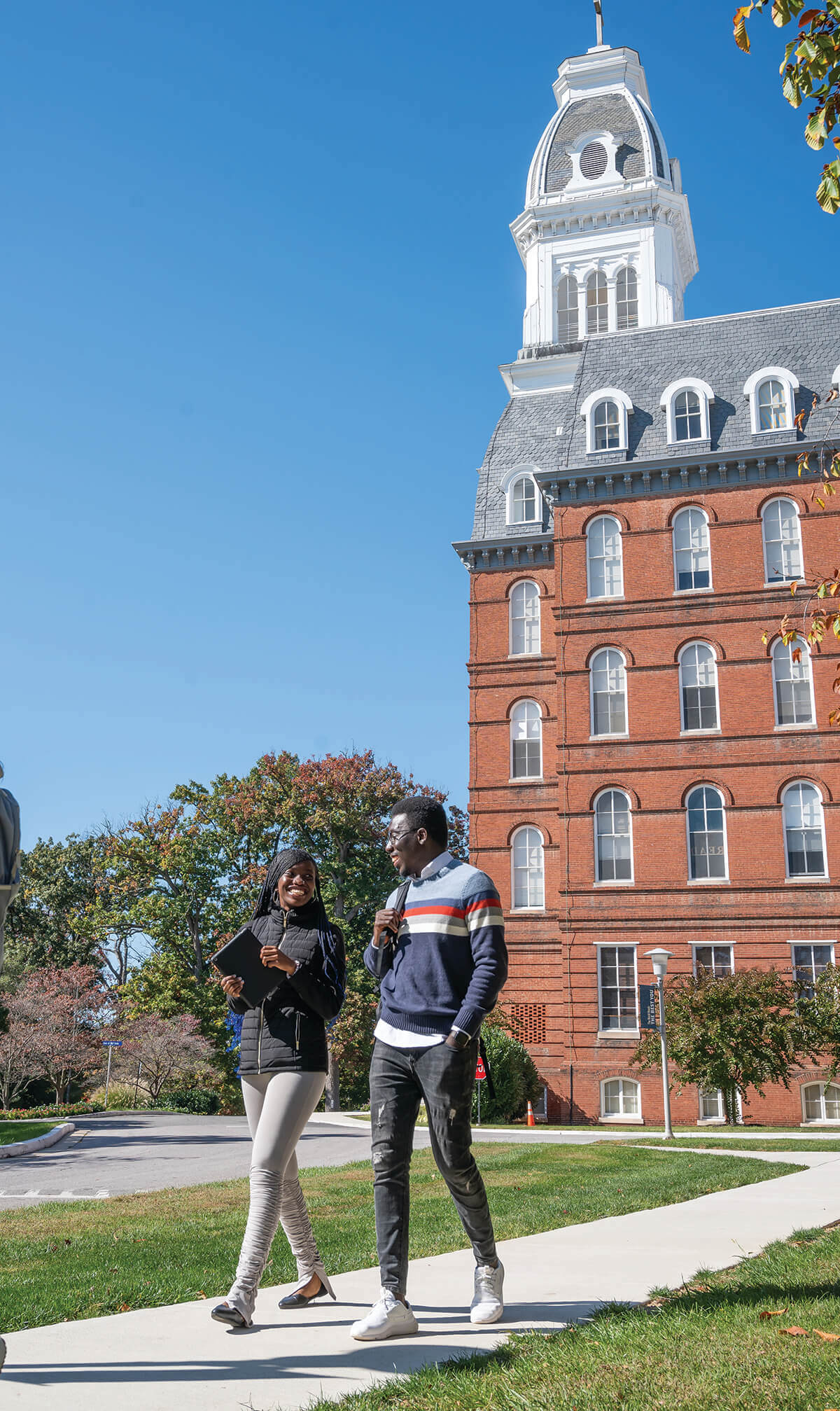
Located in rural, mountainous Emmitsburg on a massive 1,500-acre campus, “The Mount” is America’s second oldest Catholic university. It offers more than 80 undergraduate majors, minors, concentrations and special programs grounded in a Catholic liberal arts tradition, and several bachelor’s/master’s combinations in partnership with other universities. It’s a degree that pays; The Mount ranks in the top 10 percent of colleges and universities nationwide in terms of the long-term earnings for a four-year college degree. As an extra bonus, the school offers a rich NCAA division I athletic program.
SIZE OF STUDENT BODY: 1,766
STUDENT TO FACULTY RATIO: 13:1
ANNUAL TUITION: $47,240
ACCEPTANCE RATE: 80 percent
POPULAR AREAS OF STUDY: Business, Management, Marketing, Social Sciences, Computer and Information Sciences, Biological and Biomedical Sciences, Communication, Journalism, Education, Family and Consumer Sciences/Human Sciences, and Health Professions
NOTRE DAME OF MARYLAND UNIVERSITY
A private, Catholic liberal arts university in northern Baltimore, Notre Dame of Maryland University offers programs ranging from undergraduate to doctoral degrees, as well as Maryland’s only women’s college. It recently launched the first master’s of art degree in art therapy program in the state.
The beautiful, wooded campus is just steps from the bustling downtown Baltimore culture. With values rooted in Catholicism, the school focuses on service to others and social responsibility.
SIZE OF STUDENT BODY: 686
STUDENT TO FACULTY RATIO: 7:1
ANNUAL TUITION: $41,910
ACCEPTANCE RATE: 70 percent
POPULAR AREAS OF STUDY: Nursing, Psychology, Biology, Criminology, Business Administration
ST. MARY’S COLLEGE OF MARYLAND
A state institution founded in 1840, St. Mary’s College of Maryland was recently ranked among the best public liberal arts colleges by Money magazine. Located on 361 acres in rural southern Maryland, it is also know for having one of the lowest student-to-faculty ratios in the U.S. While its waterfront campus in historic St. Mary’s has the feel of a private institution, it offers all the affordability, accessibility, and diversity of a public school.
SIZE OF STUDENT BODY: 1,513
STUDENT TO FACULTY RATIO: 10:1
ANNUAL TUITION: $15,236 in-state, $31,312 out-of-state
ACCEPTANCE RATE: 77 percent
POPULAR AREAS OF STUDY: Social Sciences, Psychology, Biological and Biomedical Sciences, Natural Resources and Conservation, English Language and Literature/Letters, Visual and Performing Arts, Computer and Information Sciences, History, Foreign Languages, Literature, and Linguistics
For those who want to be close to the ocean, Salisbury University offers undergraduate, graduate, and doctoral programs at its campus in Salisbury, about a 40-minute drive from Ocean City. In 2020, Money magazine named it one of “America’s Best Colleges.” A public institution, Salisbury is a NCAA Division III Capital Athletic Conference school.
SIZE OF STUDENT BODY: 6,378
STUDENT TO FACULTY RATIO: 13:1
ANNUAL TUITION: $10,638 in-state, $ 21,332 out-of-state
ACCEPTANCE RATE: 91 percent
POPULAR AREAS OF STUDY: Business, Management, Marketing, Education, Communication, Journalism, Psychology, Public Administration and Social Service Professions, Health Professions, Parks, Recreation, Leisure, Fitness, and Kinesiology, Social Sciences, Computer and Information Sciences, Biological and Biomedical Sciences
Stevenson University is a liberal arts school on a suburban campus in Baltimore County. It offers bachelor’s degrees, master’s degrees, and pre-professional programs, as well as its Bachelor’s to Master’s option, which allows students to earn a bachelor’s and master’s degree in five years. The school is growing, having recently opened a 117-acre recreational and athletic hub on its Owings Mills campus.
SIZE OF STUDENT BODY: 2,711
STUDENT TO FACULTY RATIO: 15:1
ANNUAL TUITION: $36,940
ACCEPTANCE RATE: 84 percent
POPULAR AREAS OF STUDY: Health Professions, Business, Management, Marketing, and Related Support Services, Biological and Biomedical Sciences, Computer and Information Sciences, Education, Psychology, Visual and Performing Arts, Homeland Security, Law Enforcement, Firefighting and Related Protective Services, Multi/Interdisciplinary Studies, and Legal Professions and Studies
One of the largest public universities in the state, Towson University offers more than 110 undergraduate majors, 47 master’s degrees, six doctoral programs, and 36 graduate certificates. The university continues to draw students from other states, though it remains part of the University System of Maryland.
Its campus continues to expand, with a huge new dining hall, a 23,000-square-foot recreation and fitness facility with an indoor swimming pool, and its 5,200-seat arena for sporting events and concerts. In 2021, it opened its new Science Complex, the largest academic building on campus at 320,000 square feet. Towson also opened its StarTUp at the Armory, a space for startups and new businesses to engage with the broader community and larger businesses. It serves as a home to Towson’s entrepreneurship programs and student competitions and events. While Towson remains the largest supplier of medical professionals and educators in the state, the university has also built a strong reputation for its College of Fine Arts and Communication, as well as its Asian Arts & Culture Center, both of which bring students and the wider community to Towson for enriching performing arts, music, and visual art programs.
SIZE OF STUDENT BODY: 16, 517
STUDENT TO FACULTY RATIO: 15:1
ANNUAL TUITION: $11,306 in-state, $28,326 out-of-state
ACCEPTANCE RATE: 79 percent
POPULAR AREAS OF STUDY: Business, Management, Education, Nursing, Psychology, Biological and Biomedical Sciences, Computer Science, Journalism, Communication, Visual and Performing Arts
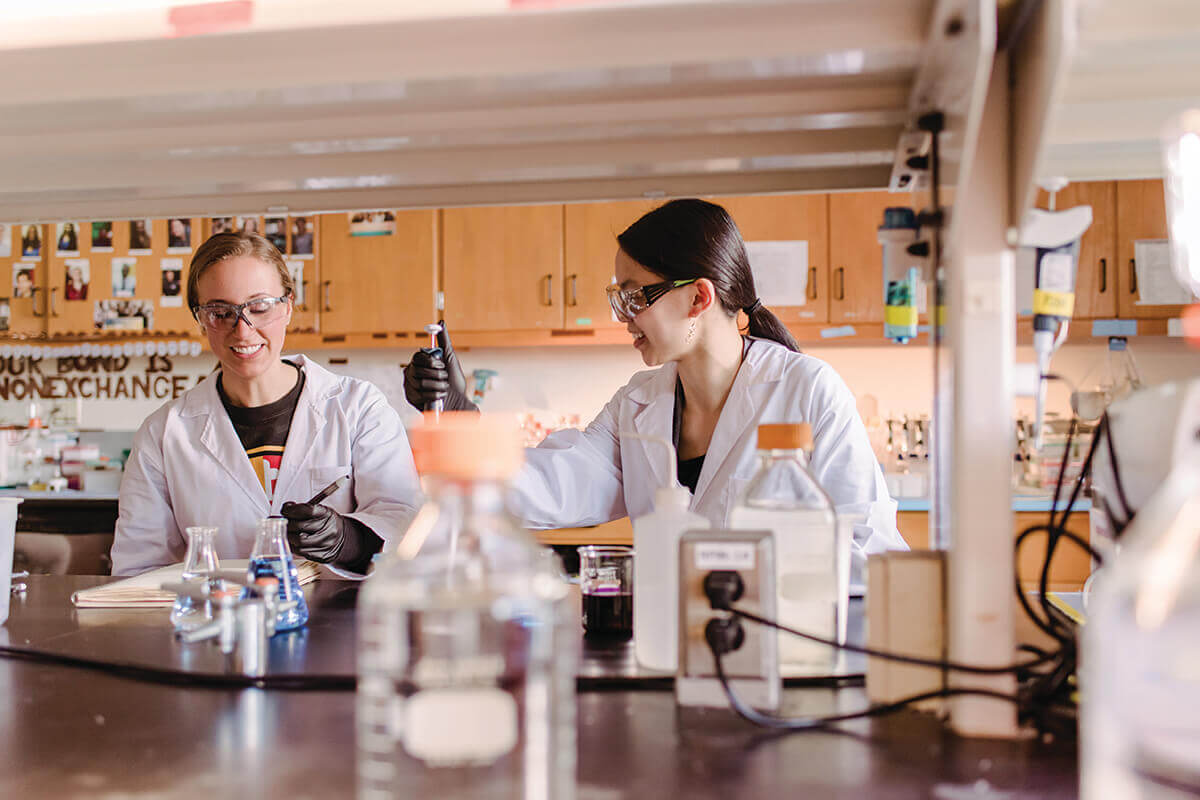
The University of Baltimore is situated in Mount Vernon, a Baltimore neighborhood rich in art, architecture, and history. UB has gained a solid reputation for its law and business programs, but it offers a wide spectrum of undergraduate and graduate degrees and doctoral programs, with an intense focus on connecting students to community and jobs, ensuring a sustainable career path post-graduation.
SIZE OF STUDENT BODY: 1,406 undergraduate
STUDENT TO FACULTY RATIO: 10:1
ANNUAL TUITION: $9,772 in-state, $23,490 out-of-state
ACCEPTANCE RATE: 61 percent
POPULAR AREAS OF STUDY: Business, Animation/Video Graphics/Special Effects, Criminal Justice/Police Science, Human Services, American Government and Politics
UNIVERSITY OF MARYLAND, BALTIMORE
The University of Maryland, Baltimore is the state’s only public law, health, and human services university. Located in downtown Baltimore, it offers 90 degree and certificate programs through its six nationally ranked professional schools—dentistry, law, medicine, nursing, pharmacy, and social work—and an interdisciplinary graduate school.
The school’s 14-acre BioPark is Baltimore’s biggest biotechnology cluster, employing more than 1,000 people in nearly three dozen life-science companies, university-based startups, and bioscience industry leaders like BD, Illumina, Catalent, and Pharmaron. With more than 250,000 square feet of lab and office space, the BioPark has been named an Outstanding University Research Park of the Year by the Association for University Research Parks. It’s located in the heart of the university’s medical campus.
SIZE OF STUDENT BODY: 930
ANNUAL TUITION: 12,692
POPULAR AREAS OF STUDY: Medicine, Law, Dentistry, Pharmacy, Nursing, Social Work
UNIVERSITY OF MARYLAND, BALTIMORE COUNTY
University of Maryland, Baltimore County educates a student population of more than 10,000 students in programs spanning the arts, engineering, information technology, humanities, sciences, preprofessional studies, and social sciences. Located on the edge of Baltimore County, it allows easy access into the city and all the conveniences of suburban life and housing. It also offers plenty of opportunities for study abroad.
In the fall of 2021, UMBC opened the Center for Well-Being, a new two-story complex that houses Retriever Integrated Health, Student Conduct and Community Standards, and i3b’s Gathering Space for Spiritual Well-Being. UMBC’s already significant NASA partnerships have continued to grow, with NASA announcing a major award of $72 million over three years, from 2021 to 2024, for the new Goddard Earth Sciences Technology and Research II center. UMBC is leading the national consortium and will receive over $38 million. The GESTAR II consortium will support more than 120 researchers, creating extensive opportunities for breakthroughs in Earth and atmospheric science research, and providing major opportunities for students.
SIZE OF STUDENT BODY: 10,490 undergraduate students, 3,658 graduate students
STUDENT TO FACULTY RATIO: 17:1
ANNUAL TUITION: $12,606 in-state, $29,370 out-of-state
ACCEPTANCE RATE: 81 percent
POPULAR AREAS OF STUDY: Computer and Information Sciences and Support Services, Biological and Biomedical Sciences, Social Sciences, Psychology, Visual and Performing Arts, Engineering
UNIVERSITY OF MARYLAND, EASTERN SHORE
The University of Maryland Eastern Shore (UMES), the State’s Historically Black 1890 LandGrant Institution, is a teaching, research, and doctoral institution that nurtures and launches leaders in a student-centered environment. Located on over 1,000 acres in Princess Anne, UMES was ranked among one of the top HBCUs by U.S. News & World Report in 2020. It is home to many unique programs and partnerships in health sciences, agricultural and environmental sciences, and renewable energy research and implementation, including a novel, three-year accelerated pharmacy program and the UMES Coastal Ecology Teaching and Research Center, which plays a significant role in the diversification of the workforce of the National Oceanic and Atmospheric Administration.
SIZE OF STUDENT BODY: 1,933
STUDENT TO FACULTY RATIO: 10:1
ANNUAL TUITION: $8,898 in-state, $19,728 out-of-state
ACCEPTANCE RATE: 81 percent
POPULAR AREAS OF STUDY: Pharmacy, Criminal Justice, Biology, Physical Therapy, Sociology, Kinesiology, Business Administration and Management, Hotel/Motel Administration
Founded in 1782, Washington College became the first college chartered after the American Revolution. This small, liberal-arts school is based on a bucolic campus in Chestertown and offers more than 50 academic programs, small class settings, and a rich study-abroad program. Recent news on campus includes the receipt of a gift of over $2 million to endow merit-based scholarships.
SIZE OF STUDENT BODY: 955
STUDENT TO FACULTY RATIO: 10:1
ANNUAL TUITION: $54,266
ACCEPTANCE RATE: 75 percent
POPULAR AREAS OF STUDY: Social Sciences, Biological and Biomedical Sciences, Business, Management, Physical Sciences, English Language and Literature/Letters, History, Communication, Journalism, and Computer and Information Sciences
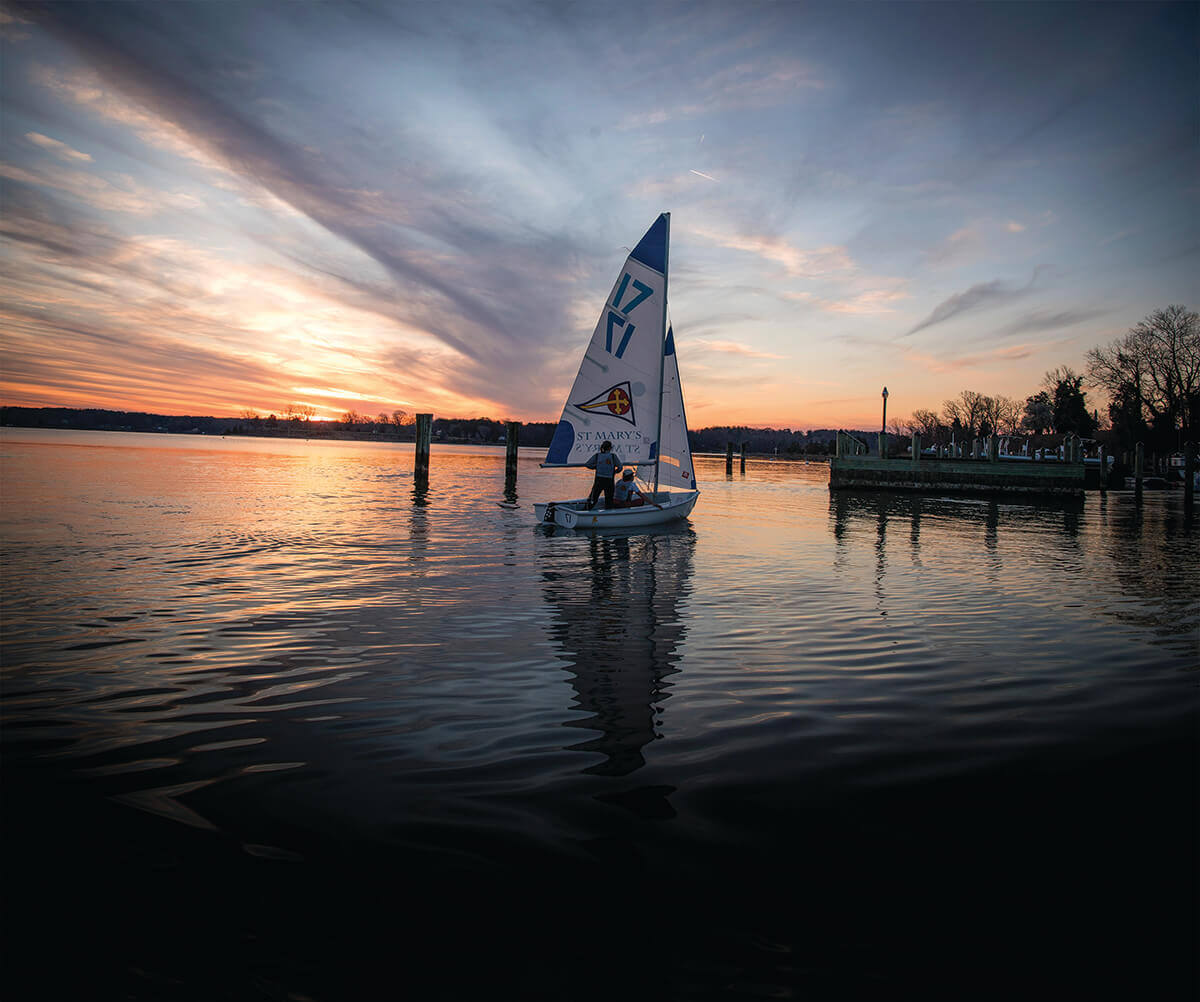
* Cited tuition costs may exclude room and board, books, and other fees.